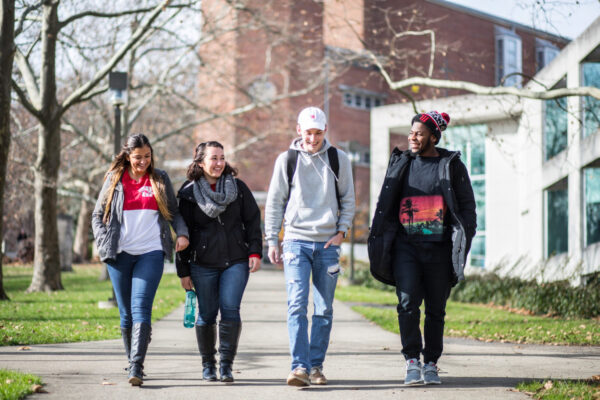ACE’s Hollie Chessman and Lindsay Wayt analyze the demands from student organizers across 76 higher education institutions and coalitions. This post is the first in a series sparked by recent student protests and the national dialogue on diversity and inclusion.
Throughout the fall semester, colleges and universities around the United States and Canada experienced perhaps the biggest upsurge in student activism since the 1960s. Similar to the demonstrations 50 years ago, student protests today are focused on social justice, specifically on issues of diversity and inclusion.
College administrations were presented with demands from student organizations, student groups and self-organized demonstrators asking leadership to address varying concerns related to the climate for underrepresented groups at their institutions. Some of these demands are a result of solidarity with Concerned Student 1950 at the University of Missouri, and others are a result of ongoing racial tension or concerns surrounding social justice issues on individual campuses.
The creators of a newly established website, TheDemands.org, have compiled student demands stating boldly that “across the nation, students have risen up to demand an end to systemic and structural racism on campus[es].” The demands are as complex and varied as the students that proffered them and the institutions that received them, so we undertook a project to examine the lists for trends and common topics.
Our analysis was completed using lists posted on TheDemands.org as of Dec. 23, 2015. We categorized and summarized each as accurately as possible, but there is value in considering individual institutional contexts. For example, context may shed light on the finding that 13 percent of the demands focus specifically on African American or Black students with over half referencing a broad focus on racial and other forms of diversity, using terms like “students of color” or “underrepresented populations.”
While the demands vary by institutional context, a qualitative analysis reveals similar themes across the 76 institutions and organizations (representing 73 U.S. colleges and universities, three Canadian universities, one coalition of universities and one consortium of Atlanta HBCUs.) In this blog, we explore these overarching themes in an effort to provide collective insight into what is important to today’s students in the heated context of racial or other bias-related incidents on college and university campuses.
Seven major themes emerged from our analysis and are described below:
Policy (91 percent)
Given the overarching goal of many of the student groups is to incite system-wide change, it makes sense that a majority of the lists called for policy change.
Ninety-one percent of student groups called for reviews and revisions of institutional policies and practices affecting campus climate and diversity practices. These demands include calls for campuses to advocate beyond the students (for example, demanding that institutions divest from prisons and adjust human resources practices for temporary employees), make college more affordable, implement climate surveys with access to resulting data for students and stakeholders, revise faculty review practices including tenure practices and student course evaluations, clearly define protocols to report incidents of hate speech and bias, allow student oversight of college and university processes, and other general calls for policy review.

Leadership (89 percent)
Student groups represented on TheDemands.org also have specific demands for campus executive leaders.
These appeals vary from calling on leaders to acknowledge institutional histories of racism, devise transparent plans of action to address student concerns, articulate the role of police on campus, and serve in an advocate role for diversity both on campus and in the community. In general, these demands show that senior leadership on college campuses need to serve as advocates for all student groups; the demands emphasize leadership practices that demonstrate the value of listening to diverse perspectives and acting on behalf of marginalized campus voices.

Resources (88 percent)
The third theme that emerged was a demand for more resources to be allocated to the needs of diverse and marginalized students. These demands vary from calls for increased funding for academic purposes, student organizations and extended programming to the construction or improvement of facilities utilized by marginalized student populations. Demands for resources also included increased staffing to serve the needs of diverse students and increased diversity programming.

Increased Diversity (86 percent)
The fourth theme represents demands for increases in diversity across the campus community. Some of these demands specifically outlined expected increases in the proportion of minority students, faculty, staff and administration on college and university campuses.

Training (71 percent)
A little under three-fourths of the student groups and organizations requested either new or revised diversity or cultural competency training, including calls for participation by specific campus community members. Demands for training varied, but in general, the lists include calls for faculty, staff, students, administration and police to receive training to increase their overall cultural competency.

Curriculum (68 percent)
Over two-thirds of the demands include calls for revisions or additions to the curricula. These demands range from charging the university to revise the entire campus curriculum to include diverse perspectives and inclusive pedagogies, to curriculum development in specific areas of study. Student groups that presented the demands also want to incorporate diversity or cultural competency courses into the required curriculum.

Support (61 percent)
Finally, over half of the lists petition for increased support services for marginalized student groups. Generally, this theme was less prevalent across the board, but the types of support called for are worth noting. Advocates have called for increased support services for minority and marginalized students on campus in regards to academic, activity, career, legal and mental health support. Over one-third of the lists of demands include requests for increased mental health support.

When considering the student voices from across the 76 institutions or consortiums, a broader picture for accountability and systemic change can be seen. These students are petitioning institutions to consider expansive shifts to institutional culture rather than merely stand-alone programs or add-on policies. The demands are calling for a change in how marginalized student groups access, experience and are represented in higher education. While some demands will require long-term systemic approaches, the next few months will be critical as student organizers and administrators collaborate to find workable solutions for students today and for those who enter higher education in the years and decades to come.
If you have any questions or comments about this blog post, please contact us.



